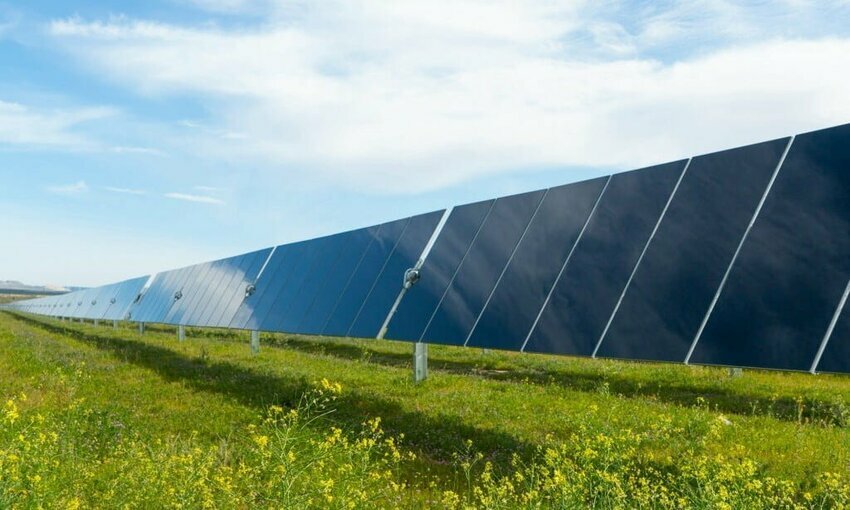 (Credit: First Solar)
(Credit: First Solar)UbiQD has entered a joint agreement with First Solar to collaborate on the development of fluorescent quantum dot technology. This innovation would help optimize sunlight utilization, increasing the overall efficiency of current solar panels.
The two companies have been working together to explore the technology since 2022, and the success of their initial results has led to this formalized joint-development. The technology has been implemented for use in UbiQD’s greenhouse products, which help enhance crop growth through the adjustment of sunlight spectra. Through this partnership, the same materials are being engineered for use in utility-scale solar projects which use photovoltaic technology.
“As we work towards developing the next generation of photovoltaics, we are exploring a range of enhancements that could allow us to convert more sunlight into energy,” said Markus Gloeckler, chief technology officer of First Solar. “We are interested in the potential use of quantum dots in optimizing the absorption of light and look forward to continuing our work with UbiQD on exploring this possibility.”
First Solar, committed to domestic solar production in the U.S., recently announced a $1.1 billion investment towards creating their fifth solar manufacturing facility in Louisiana. With this new development, the company is expected to reach about 14 gigawatts of energy in the United States and 25 gigawatts globally by 2026.
Investing in UbiQD’s technology should help further the efficiency of these new facilities and those already in operation.
“With First Solar’s domain expertise and leadership position in multi-gigawatt-scale solar, we are excited to be working together on the potential to enhance panel efficiency using quantum dot technology," said Hunter McDaniel, CEO of UbiQD. “If successful, this application in solar modules will be a perfect example of the broad applicability of our core technology. With emerging applications in food and energy, these novel nanomaterials are proving to be a key tool in humanity’s urgent response to climate change and further sustainable economic development.”
Solar energy is now the greatest contributor to clean energy in the U.S. power grid. First Solar's use of vertical integration combined with the increased efficiency from quantum dot implementation may further contribute to the increased prevalence of solar in the coming years.